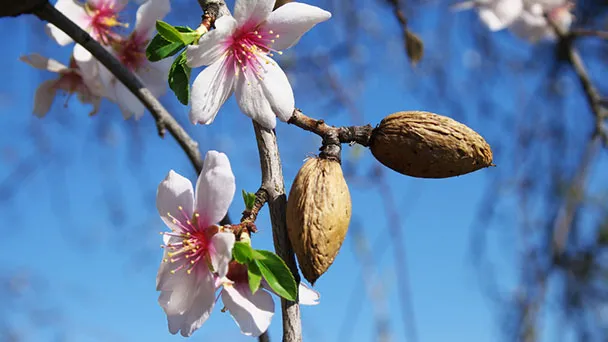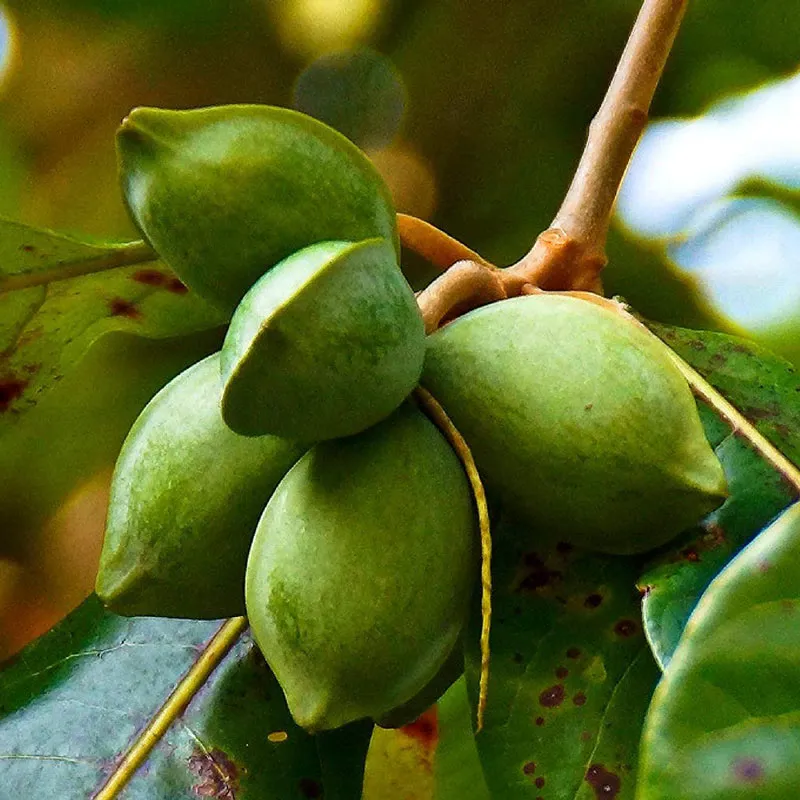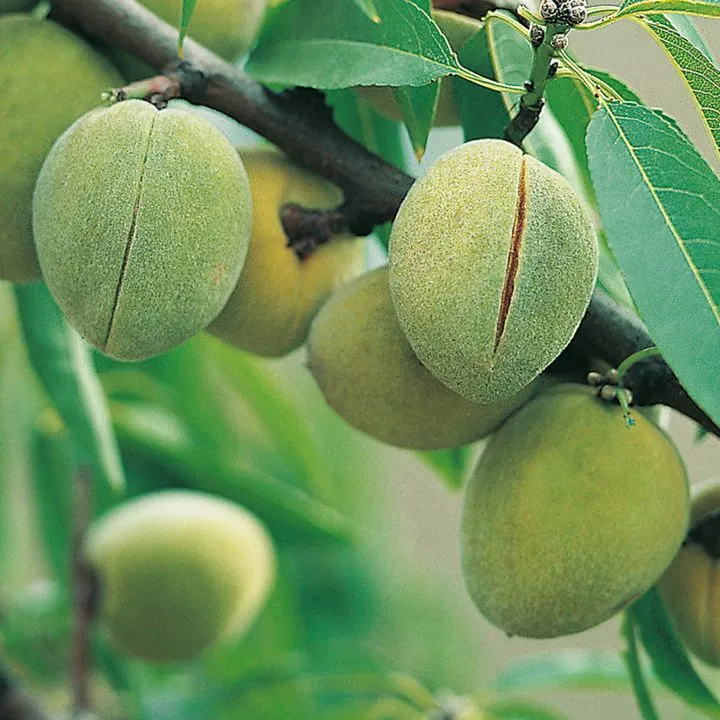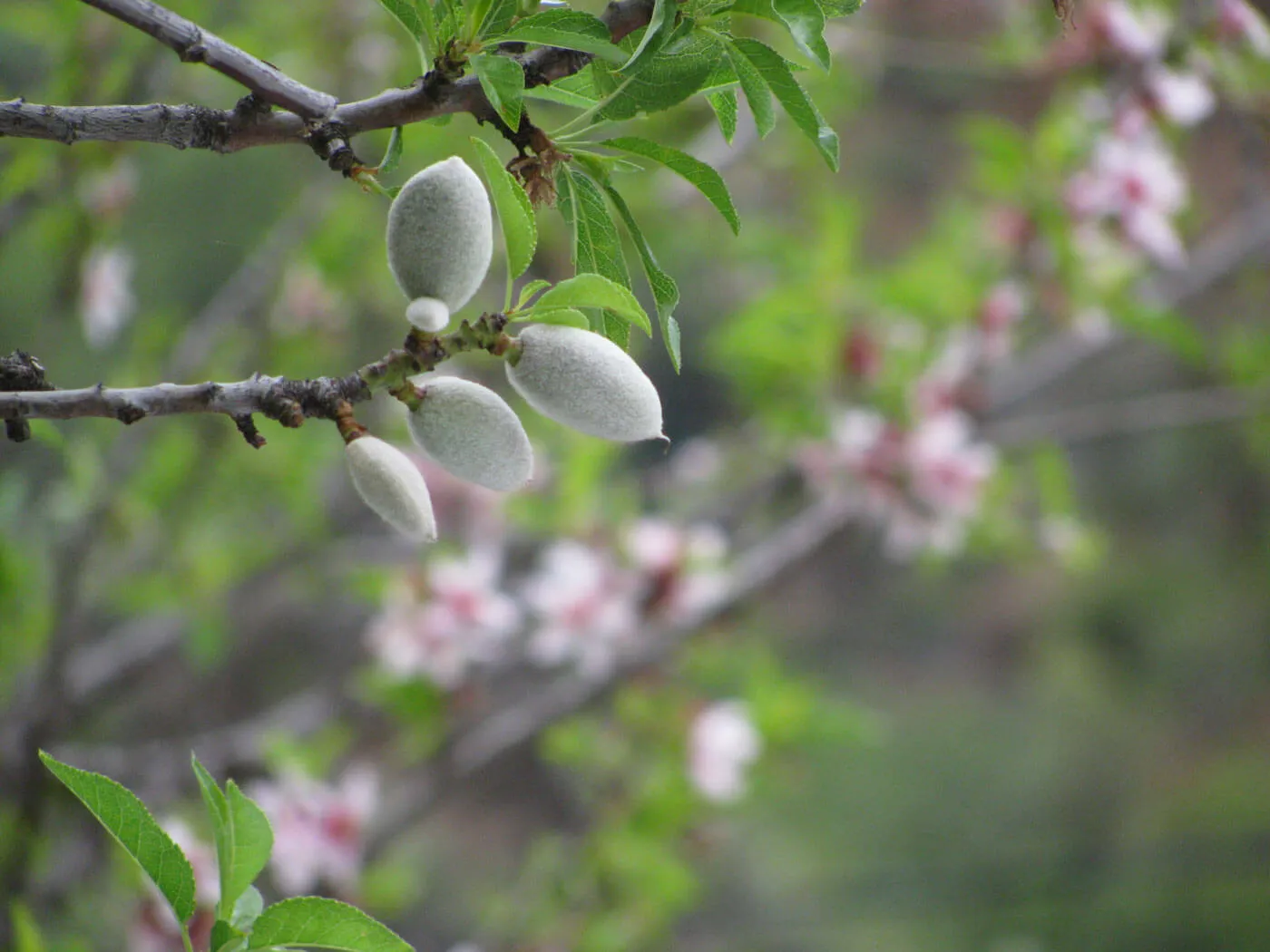Where Do Almond Trees Grow
Written by Ivy
Nov 23 2021

Where Do Almond Trees Grow?Almond is a popular nut produced all over the world. Almond trees are especially suitable for growing in warm and arid areas.
 Almond trees grow in the dry and hot areas of the Middle East and South Asia. It is most suitable for them to grow in hot summer and warm winter. It is not adaptable to other climate types and cannot survive in cold areas. Planting almond trees requires Mediterranean or Middle Eastern climate conditions, but it is another matter if you have a large indoor temperature control system.
Almond trees grow in the dry and hot areas of the Middle East and South Asia. It is most suitable for them to grow in hot summer and warm winter. It is not adaptable to other climate types and cannot survive in cold areas. Planting almond trees requires Mediterranean or Middle Eastern climate conditions, but it is another matter if you have a large indoor temperature control system.
We can determine whether your area is suitable for almond growth according to the USDA plant cold tolerance map. These maps will mark the local minimum temperature to give readers a general understanding of the types of plants that can grow in the region. The lowest temperature in the area suitable for planting almond trees should be at least 6 °, the higher the better. According to this standard, the areas suitable for almond growth include central and Southern California, parts of Arizona and Texas, and the interior of Florida. There are two ways to plant almond trees: seed planting and seedling planting. We use seeds to let you experience the fun of planting all the way, but it takes time and effort. The seedling planting of almond trees is convenient, but the price is expensive. If you want to harvest edible almonds, the selected seeds or seedlings must grow into fruiting sweet almond trees. Bitter almond kernel can not be eaten, and sweet almond trees can not all bear fruit. These tree species are only used for viewing and cooling.
There are two ways to plant almond trees: seed planting and seedling planting. We use seeds to let you experience the fun of planting all the way, but it takes time and effort. The seedling planting of almond trees is convenient, but the price is expensive. If you want to harvest edible almonds, the selected seeds or seedlings must grow into fruiting sweet almond trees. Bitter almond kernel can not be eaten, and sweet almond trees can not all bear fruit. These tree species are only used for viewing and cooling.
 If we use tree species (almonds with hard shells) to raise seedlings, we can first grow almond seeds in a controlled environment, and then transplant them into the pot or field after germination and emergence. First put the seeds in a large bowl (the more seeds, the better. Some seeds will not germinate, while others will die due to moisture), and then propagate Almond seedlings according to the following steps:
If we use tree species (almonds with hard shells) to raise seedlings, we can first grow almond seeds in a controlled environment, and then transplant them into the pot or field after germination and emergence. First put the seeds in a large bowl (the more seeds, the better. Some seeds will not germinate, while others will die due to moisture), and then propagate Almond seedlings according to the following steps:
First, we can fill a large bowl with water and soak the seeds overnight. The next day, we can pry almond slightly with a nut clip, so that we can see the inside of the fruit without falling off the shell. Throw away the damp seeds. We fill the small flowerpot with soil, and there should be a drain hole at the bottom of the flowerpot. We can bury the seeds 3-6cm below the soil, with the opening of the seeds facing up. Then we can put the flowerpot on the sunny side of the house and wait for the seeds to germinate.
Read More:
Almond Tree Grow & Care Instructions
The Best Places to Grow Almond TreesThings to Consider before You Plant Almond TreesThings to Consider when You Plant Almond Trees
The Best Places to Grow Almond Trees

We can determine whether your area is suitable for almond growth according to the USDA plant cold tolerance map. These maps will mark the local minimum temperature to give readers a general understanding of the types of plants that can grow in the region. The lowest temperature in the area suitable for planting almond trees should be at least 6 °, the higher the better. According to this standard, the areas suitable for almond growth include central and Southern California, parts of Arizona and Texas, and the interior of Florida.
Things to Consider before You Plant Almond Trees

Things to Consider when You Plant Almond Trees
Sufficient sunshine can make almond trees grow healthily. Please choose a place with sufficient light and no shadow in the garden or yard before planting. Although the seedlings should be kept in the basin before they are officially buried, it is also important to choose the planting location. After all, the growth rate of seedlings is very fast. The soil drainage performance of the planting site must be better. Almond trees are not resistant to water. Flooding can cause root rot.
First, we can fill a large bowl with water and soak the seeds overnight. The next day, we can pry almond slightly with a nut clip, so that we can see the inside of the fruit without falling off the shell. Throw away the damp seeds. We fill the small flowerpot with soil, and there should be a drain hole at the bottom of the flowerpot. We can bury the seeds 3-6cm below the soil, with the opening of the seeds facing up. Then we can put the flowerpot on the sunny side of the house and wait for the seeds to germinate.
Read More:
Almond Tree Grow & Care Instructions
Latest Updated
- Benefits of Bugleweed - 7 Science-backed Health Benefits
- Bugleweed Dangers & Side Effects - Is It Poisonous?
- How to Plant Evergreen Trees - What You Should Know
- When to Plant Evergreens - Grow Guide for Evergreen Trees
- 12 Wonderful Evergreen Shrubs for Your Garden
- 12 Popular Evergreen Plants with Pictures for Beginners
- When And How To Prune A Lilac Bush Like a Pro
- How to Grow & Care for Lilac Vine (Hardenbergia Violacea)
- Japanese Lilac Tree (Syringa Reticulata) Care & Propagation Guide
- Shumard Oak Pros and Cons - What to Know
Popular Articles
- Winter maintenance of Antirrhinum Majus
- How to Grow Terminalia Mantaly Tree
- How to Grow and Care for Crossostephium Chinense
- How to grow Antirrhinum Majus in spring
- Peristeria Elata (Dove Orchid) Profile: Info & Care Guide
- Underwatered Snake Plant (Sansevieria Trifasciata) - Signs And How To Fix
- How to Care for Brazilian Jasmine Plant (Mandevilla Sanderi)
- How to Grow & Care for Graptopetalum Purple Delight in Summer
- Rosa Chinensis (China Rose): Plant Growing & Care Tips
- How to Care for Baby Sun Rose (Aptenia Cordifolia)